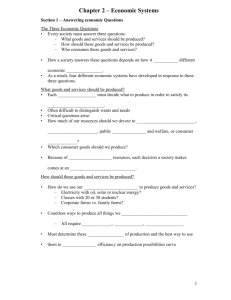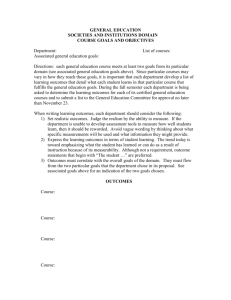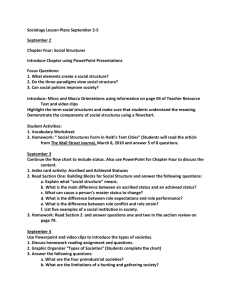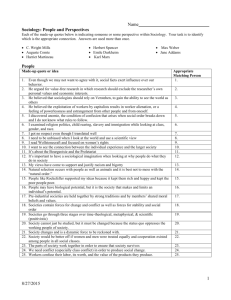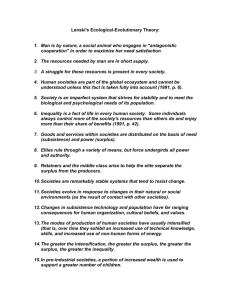Modernization and globalization
advertisement
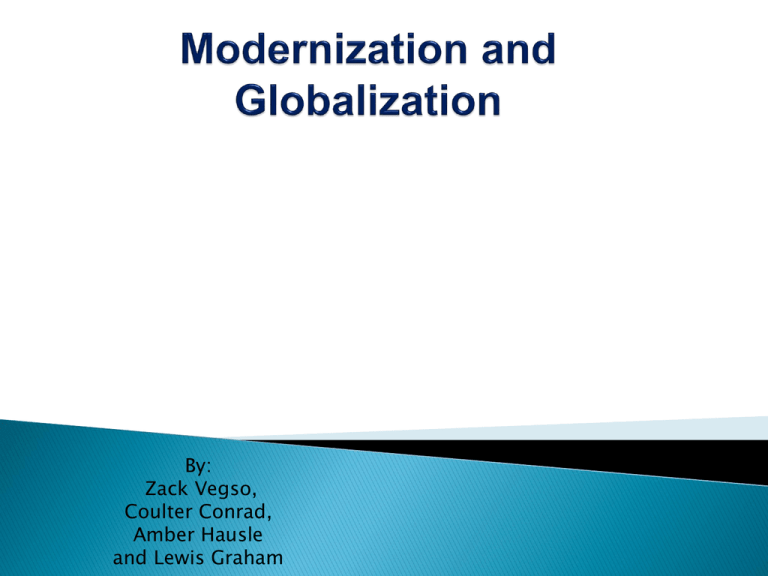
By: Zack Vegso, Coulter Conrad, Amber Hausle and Lewis Graham The theory emerged in the 1950’s as a explanation of how the industrial societies of North America and Western Europe developed. The theory argues that societies develop in fairly predictable stages through which they become increasingly complex. In the theory, societies are seen as passing through stages that mirror human life. In this viewpoint societies are born, grow maturely , decline in age and eventually die. Transportation systems widely used in a Nation (i.e. Does America use the transit system as much as Japan does?). Education in different countries. Development of mass media. The term is used to describe societies that have lived through their prime and are no longer alive or popular due to the development of new technologies that has outdated theirs. Examples include: 1. Chinese Dynasties 2. Amish Folk 3. Medieval Kingdoms 4. Renaissance Era If societies do not upgrade to the human lifestyle and demands they will die off. A Russian American sociologist who presented a different theory on the development of social change. He presented social fluencies at two different extremes. Ideational culture- truth and knowledge are sought through faith or religion. Sensate culture- people who seek knowledge through science. Ideational cultures are likely to devote to spiritual pursuits. Examples: Monks, Nuns, Christians, Muslims, Jews. Sensate cultures are likely to be practical and materialistic. Examples: Atheists, Alchemists, Evolutionism Sometimes the two societies reach a middle point between the two extremes. This occurrence is called Idealistic culture. Here Sorokin suggests the characteristics of both are combined. The process of increased interconnectedness among countries most notably in the areas of economics, politics, and culture. Improved technologies, telecommunications, movement of people and capital, diffusion of knowledge, nongovernmental organizations, multinational organizations, are all factors in globalization. McDonalds (An American Company) having locations worldwide in The US, Japan, Australia, Europe, ect. Social media sites such as Facebook having the option of different languages. The sale of clothes in other nations (i.e.: where is the shirt you have on made from?). The United Nations forming after World War II on October 24th, 1945. Car companies selling their machines worldwide. (i.e. Ford, Nisan, Ferrari, Mercedes being sold and driven in different countries. A term invented by George Ritzer to describe a sociological phenomenon that is happening in our society. It is the process of: Rationalization- the substitution of logically consistent rules for traditional (or illogical) rules. Google.com Sociology.about.com/odM_index/g/Moderniz ation-Theory.htm Geography.about.com/od/globalizationprobl emsandissues/a/globalization.htm http://www.mcdonaldization.com/whatisit.sh tml



